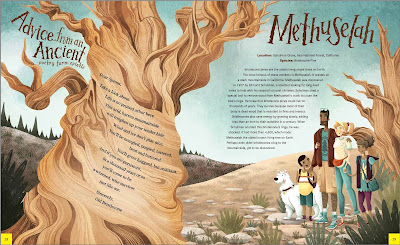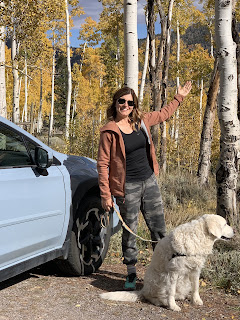Hello and Happy Poetry Friday! Be sure to visit terrific Tricia at The Miss Rumphius Effect for Roundup.
Here we are on the eve of National Poetry Month...wow! I love this time of year. Thanks to Jama at Jama's Alphabet Soup for including a roundup of National Poetry Month projects...so inspiring!
I will have much to share with you next week, when Poetry Roundup is here...and the Progressive Poem is here...and my public poetry project to which so many of you have contributed will be up and running!
Here's a sneak peak of some of the bounty that has arrived in my mailbox these past weeks. (Those arriving in the past few days not pictured...rest assured, if you've heard from me, I do have your poems!! YAY!) Poems from 25 poets across the US and Australia and Canada, too! You poets are AWESOME. I'll have pics for you next week of the finished project.
In other news, I'm honored THE MUSEUM ON THE MOON was named a Lee Bennett Hopkins Poetry Award Honor Book. Woohoo! So many congratulations to Georgia Heard and Rebecca Kai Dotlich for the (beautiful) winning title WELCOME TO THE WONDER HOUSE and to Chris Harris whose MY HEAD HAS A BELLYACHE also earned an Honor. Much gratitude to the committee. Mwah! And of course, to Lee, who did (and does!) so much to promote children's poetry. I know he's up there smiling.
I have Rose Cappelli to thank for this week's ArtSpeak: FOLK ART. Thanks, Rose!
Along with her poems for the bulletin board, she sent me a card featuring art by Horace Pippin.
Fun fact: Rose was one of the co-authors of the teaching guide for the picture book biography of Horace Pippin by Jen Bryant, illus. by Melissa Sweet called A Splash of Red: the Life and Art of Horace Pippin. Right away I found several of Horace's pieces that I knew I wanted to write after. Here is the first one, which features a special childhood memory...and the title is a nod to a favorite of mine: "I Go Back to May 1937" by Sharon Olds.
I Go Back to Hoe Cakes
Sitting on a stool
in Grandma's cozy
pine-cabinet kitchen
watching her sun-worn hands
add warm water and salt
to Hoover's cornmeal
how she'd pat the dough
with those long
Florida pioneer fingers
ease it into the oil-slick
of that old iron skillet
my tongue somersaulting
as it sizzled and browned—
Is it ready yet?
Grandma's grin
as she lifts it with a spatula,
flips it onto a plate
where it cools for a quick minute
then Grandma pulls
off a little piece
just for me.
- Irene Latham
And now for the recipe! You'll find all sorts of hoe cake recipes online, but none of them are the one I grew up with. So I decided I should include the recipe in this post.
First of all, you have to have the right kind of cornmeal, which is Hoover's fine-sifted white corn meal.
Whenever any of our family members are visiting the Florida panhandle, we always stop in at the Piggly Wiggly in Port St. Joe and pick up a couple of bags. (You can now also order them on Amazon, but that's not nearly as much fun!)
The recipe is just three simple ingredients: corn meal, water, and salt. (Do NOT forget the salt.) My Grandma used the recipe on the back of the bag, though she didn't ever measure anything. She was an eyeballer (as am I!). The dough should resemble pancake batter in thickness. Here's the official recipe on the bag...and our family's recipe typewritten for you. Also, please find a couple of pics below. (Note: The bag calls it all-one-word "Hoecake." Our family has always made it two words: "Hoe Cake.")
Hoe Cake (Dykes Family/Florida Panhandle Style)
1 cup Hoover's corn meal
1 cup boiling water or milk (we never used milk; and the water can just be hot water from the tap)
3/4 tsp. salt
iron skillet (seriously: if you don't yet cook with iron, you must get yourself a good, aged skillet from a family member or thrift store. This hoe cake will not turn out right in any other kind of skillet.)
Let it sit a minute. (It will expand.)
Heat oil in an iron skillet (medium-high).
Pour in batter.
Let cook until brown on one side (if you try to turn it too soon, it will crumble; it'll test your patience, but you have to wait for it...it always takes longer than I think it should!
When you can slide my spatula under the whole cake without it scrambling, you'll know it's ready to turn!)
Brown it on the other side. (It may get a little black in places. That's okay! More iron for you!)
Remove from skillet and let drain/cool on a plate lined with paper towel.
Enjoy!
p.s. Had to share this:
 |
| from my 2013 scrapbook! |



















